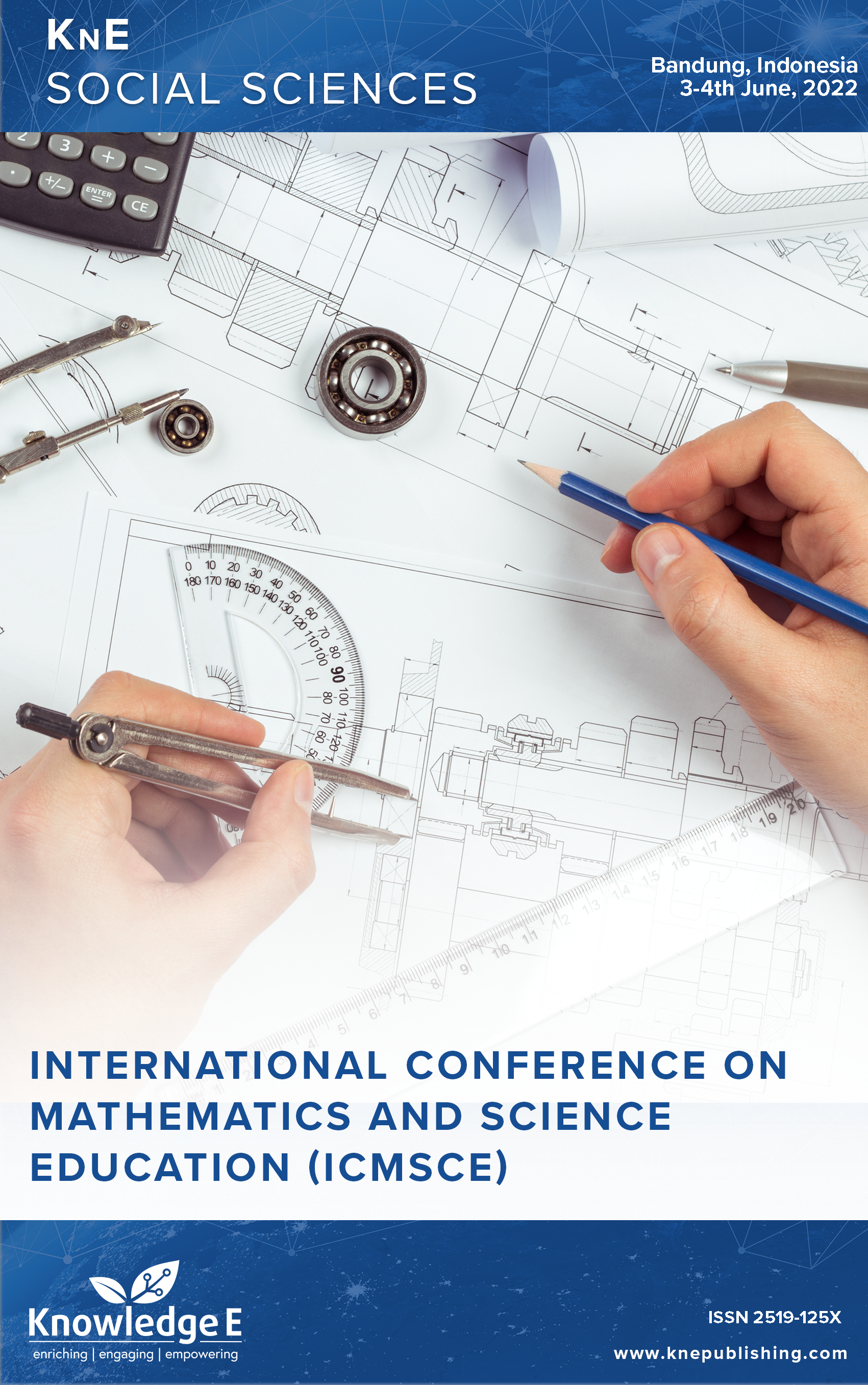Identification of the Difficulties of Middle School Students in Understanding the Mixed Operations of Integer
DOI:
https://doi.org/10.18502/kss.v9i13.15956Abstract
The difference between the students’ conceptions and the conceptual substance has led to a misconception regarding the mixed arithmetic operation on integers. This study aims to describe students’ understanding and to identify learning difficulties related to the mixed operation of integers. This study was a qualitative study with a case study design. The subjects of the study were the students of grade VII of a junior high school in Bandung. The data collection was done through tests, interviews, and curriculum documents. Data analysis is descriptive in general by reposing data, presenting data, and drawing conclusions. From the results of the study, it can be concluded that students have difficulties in understanding the concept of integers and their operation, especially those related to the mixed operations of integers. Based on the data analysis, it can be shown that some students recognize numbers only as a formal symbol in mathematics. Numbers for them are something abstract so they have difficulty when they present these numbers in concrete. Another result is students have difficulty in using mixed operations of integers.
Keywords: difficulties of middle school students, mixed operations of integer, understanding
References
Suzana A. “Anna Suzana 2014 Desain didaktis konsep luas permukaan prisma pada pembelajaran matematika SMP berdasarkan learning obstacle dan learning trajectory.” p. 2011.
Febriyanti R, Mustadi A, Jerussalem MA. Students’ learning difficulties in mathematics: how do teachers diagnose and how do teachers solve them? Jurnal Pendidikan Matematika. 2021;15(1):23–36. DOI: https://doi.org/10.22342/jpm.15.1.10564.23-36
Sierpinska A. “Lecture notes on the theory of didactic situations in mathematics.” p. 2003.
Chin LC, Zakaria E. Understanding of number concepts and number operations through games in early mathematics education. Creat Educ. 2015;06(12):1306–15. DOI: https://doi.org/10.4236/ce.2015.612130
Allen CE, Froustet ME, LeBlanc JF, Payne JN, Priest A, Reed JF, et al. National council of teachers of mathematics. Arith Teach. 2020;29(5):59. DOI: https://doi.org/10.5951/AT.29.5.0059
Permendikbud, “Standar kompetensi lulusan no. 20 tahun 2016.”. Kemendikbud. 2016;3(2):13–22.
Bernard M, Akbar P, Ansori A, Filiestianto G. “Improve the ability of understanding mathematics and confidence of elementary school students with a contextual approach using VBA learning media for Microsoft Excel.” Journal of Physics: Conference Series. vol. 1318, no. 1, p. 2019. https://doi.org/10.1088/1742-6596/1318/1/012035. DOI: https://doi.org/10.1088/1742-6596/1318/1/012035
Akyüz D, Stephan M, Dixon JK. The role of the teacher in supporting imagery in understanding integers. Egitim ve Bilim. 2012;37(163):268–82.
Rellensmann J, Schukajlow S. Does students’ interest in a mathematical problem depend on the problem’s connection to reality? An analysis of students’ interest and pre-service teachers’ judgments of students’ interest in problems with and without a connection to reality. ZDM Math Educ. 2017;49(3):367–78. DOI: https://doi.org/10.1007/s11858-016-0819-3
Mehrens WA, Lehman IJ. Measurement and evaluation. 2004.
Thompson DR, Kaur B. Using a multi-dimensional approach to understanding to assess students’ mathematical knowledge. Assessment in the Mathematics Classroom. WORLD SCIENTIFIC; 2011. pp. 17–31. DOI: https://doi.org/10.1142/9789814360999_0002
Li X, Li Y. Research on students’ misconceptions to improve teaching and learning in school mathematics and science. Sch Sci Math. 2008;108(1):4–7. DOI: https://doi.org/10.1111/j.1949-8594.2008.tb17934.x
Stake R. “Data gathering for ifa organisations: practical guidance and comment.,” In: The art of case study research. pp. 49–68. CA: Sage, Thousand Oaks, (1995).
Altiparmak K, Özdoğan E. A study on the teaching of the concept of negative numbers. Int J Math Educ Sci Technol. 2010;41(1):31–47. DOI: https://doi.org/10.1080/00207390903189179
Widdiharto R. Diagnosa kesulitan belajar matematika smp dan alternatif proses remidinya. Yogyakarta: Depdiknas; 2008.
Nunez MB, Clores MA, Shamuganathan S, Karpudewan M, Igbokwe BA. Environmental literacy assessment: assessing the strength of an environmental education program (EcoSchools) in Ontario secondary schools for environmental literacy acquisition. Int J Environ Sci Educ. 2015;10(5):757–71.
Nunes T, Dorneles BV, Lin P-J, Rathgeb-Schnierer E. Teaching and learning about whole numbers in primary school., 2016. DOI: https://doi.org/10.1007/978-3-319-45113-8
Almeida R, Bruno A. Strategies of pre-service primary school teachers for solving addition problems with negative numbers. Int J Math Educ Sci Technol. 2014;45(5):719–37. DOI: https://doi.org/10.1080/0020739X.2013.877605
Pietkiewicz IJ, Bańbura-Nowak A, Tomalski R, Boon S. “Revisiting false-positive and imitated dissociative identity disorder.,” Frontiers in Psychology. vol. 12, no. May, p. 2021. https://doi.org/10.3389/fpsyg.2021.637929. DOI: https://doi.org/10.3389/fpsyg.2021.637929
Fuadiah NF, Suryadi D, Turmudi T. Some difficulties in understanding negative numbers faced by students: a qualitative study applied at secondary schools in Indonesia. Int Educ Stud. 2016;10(1):24. DOI: https://doi.org/10.5539/ies.v10n1p24
Hughes M. Children and numbers: difficulties in learning mathematics. Basil Blackwell; 1986.
Purnomo YW. “Pembelajaran matematika untuk pgsd: bagaimana guru mengembangkan penalaran proporsional siswa.,” no. July, p. 2015.

